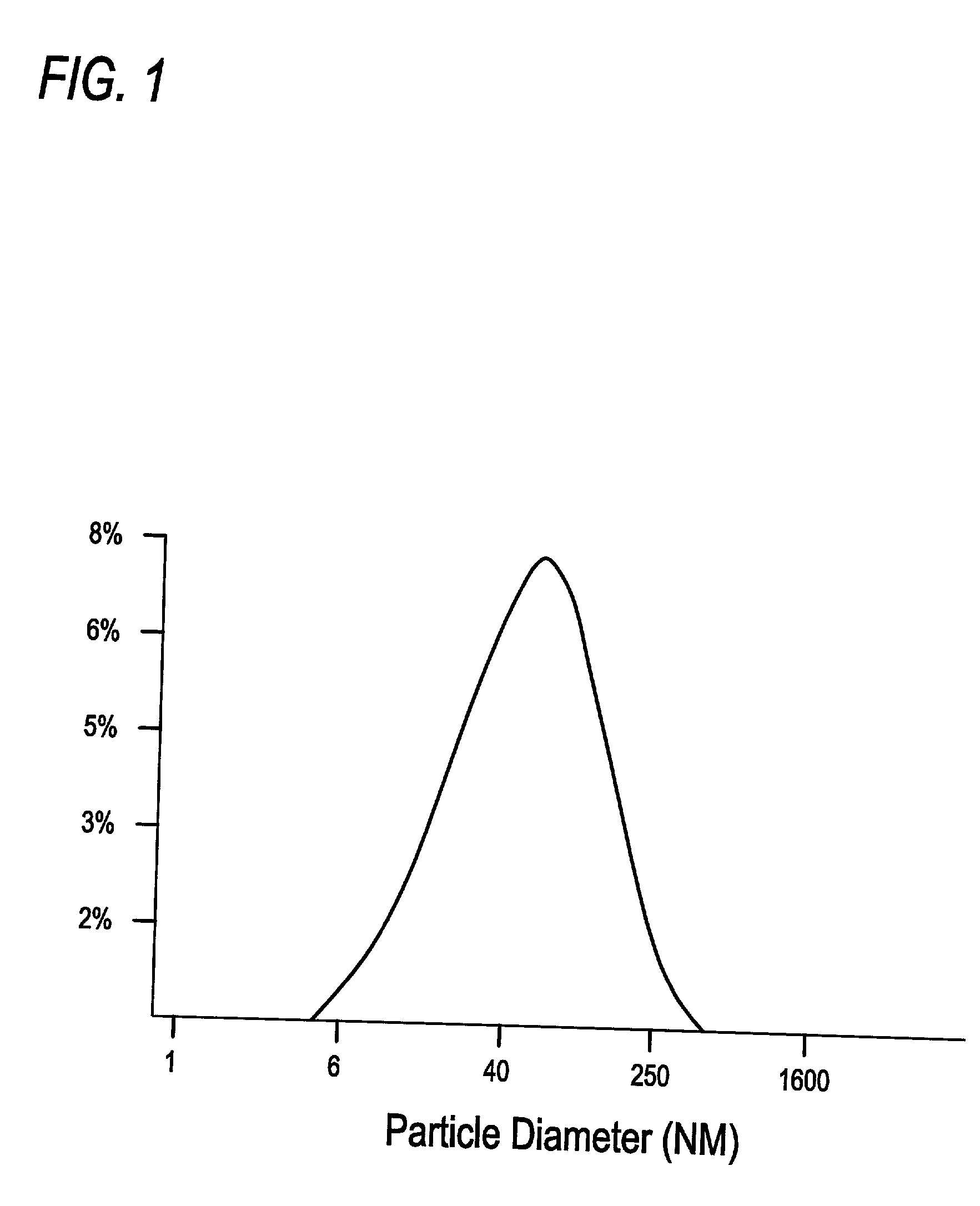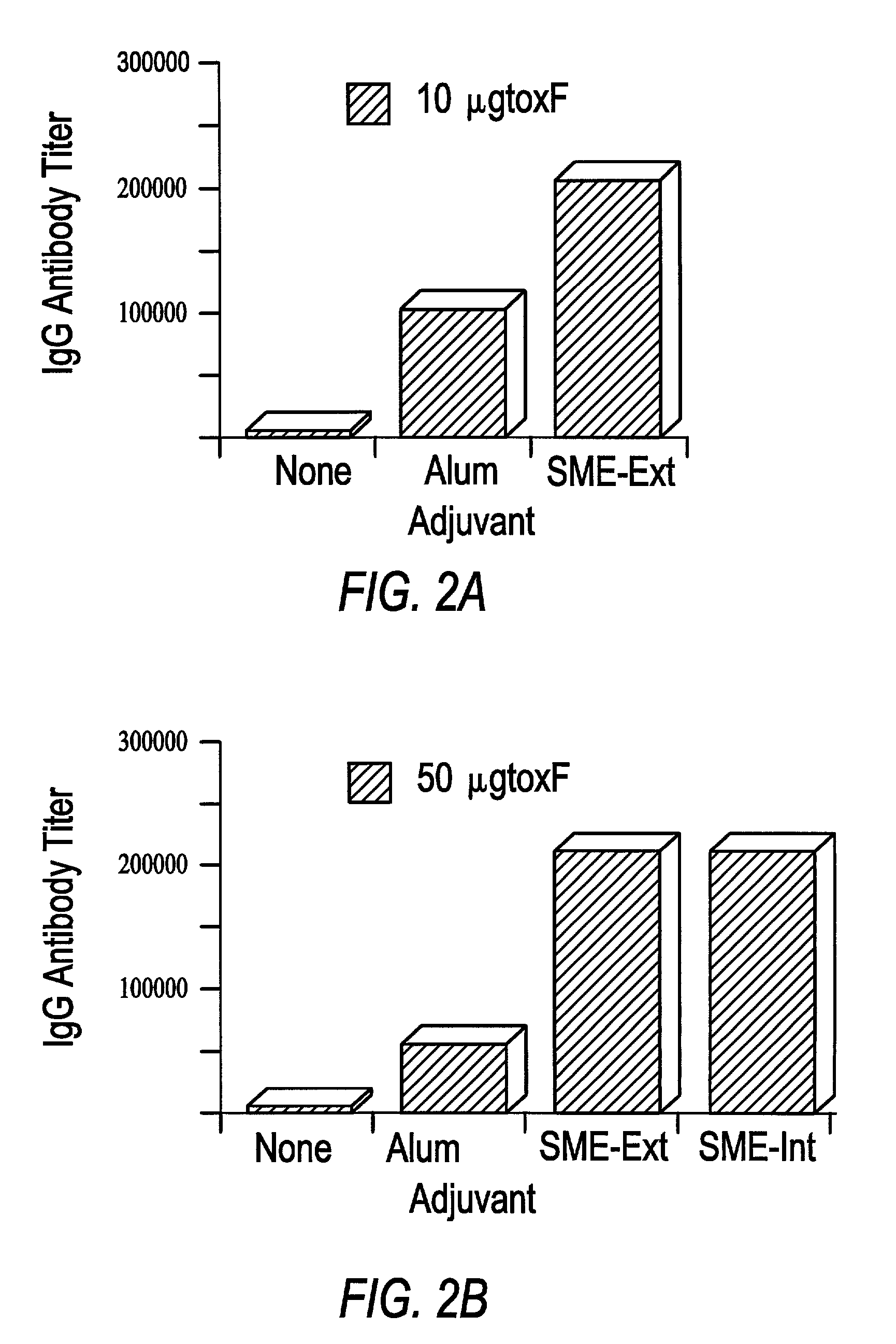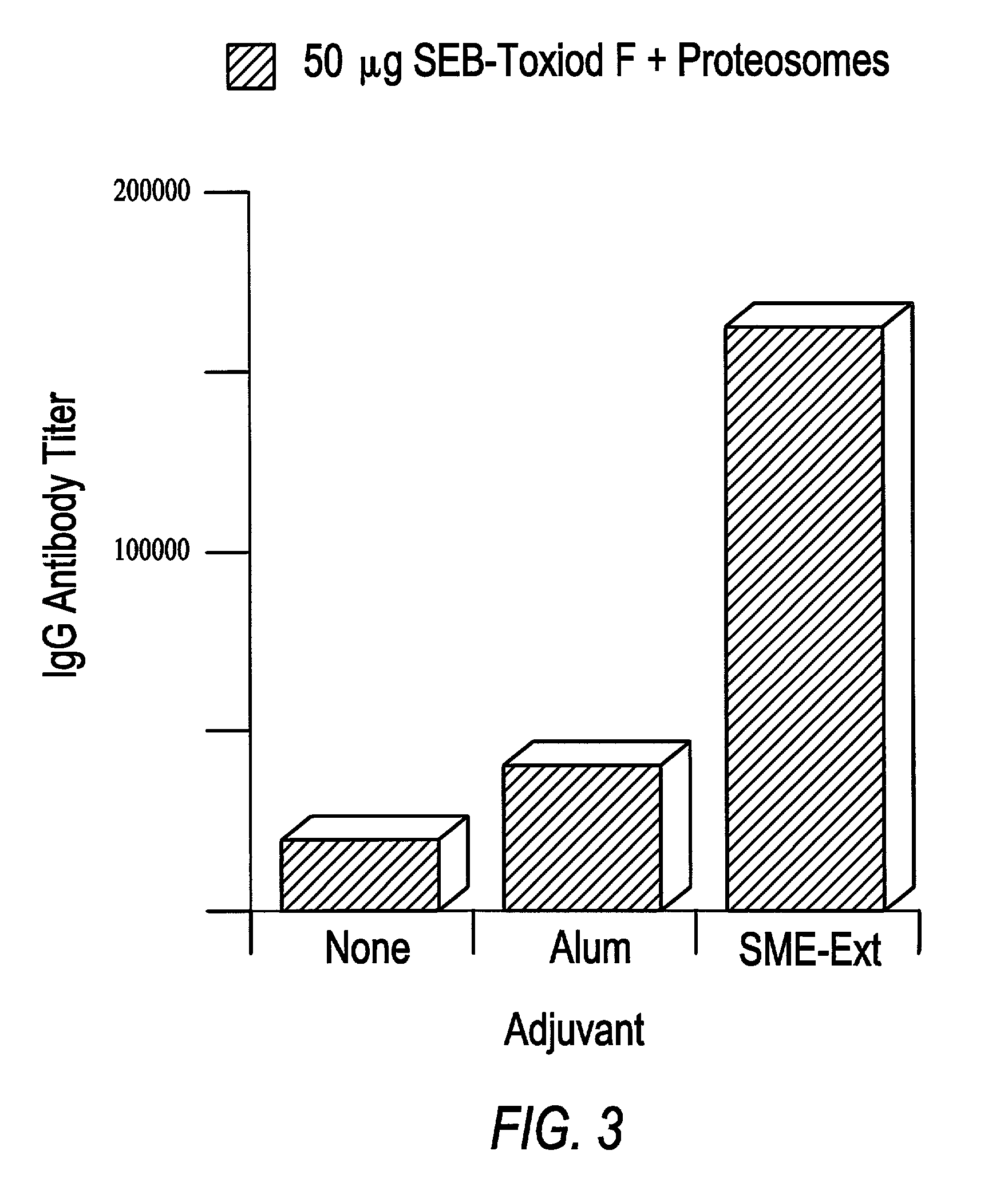Oral or intranasal vaccines using hydrophobic complexes having proteosomes and lipopolysaccharides
a hydrophobic complex and lipopolysaccharide technology, applied in the field of emulsions, can solve the problems of low antibody titer, limited supply of useful antigens, and difficulty in ensuring the safety of patients, so as to prevent their exposure, facilitate intestinal uptake, and add stability to the antigen.
- Summary
- Abstract
- Description
- Claims
- Application Information
AI Technical Summary
Benefits of technology
Problems solved by technology
Method used
Image
Examples
example 1
Preparation of Intrinsic-gp160-SME Vaccine
[0107] Antigen description and background
[0108] The urgency and high priority for developing an effective vaccine against the human immunodeficiency virus (HIV) are fully recognized. The reasons for using subunits of the virus as the basis of an HIV vaccine are the perceived overwhelming requirements for safety. Despite the high efficacy of many live attenuated viral vaccines, the requirement for product safety, especially in the case of retroviruses, has favored the subunit approach to the extent that all of the current candidate preparations in clinical prophylactic trials are of this type, being mainly gp160, the envelope protein of HIV, or part thereof. Studies have shown that gp160 attaches the virus to the cell and also facilitates the fusion of the cell and virus during the early stages of infection.
[0109] The gp160 antigen used in this example was supplied by MicroGeneSys Inc. This gp160 recombinant protein in alum-adjuvanted vaccine...
example 2
Preparation of Intrinsic-SME Vaccine Containing
[0120] gp160 Complexed to Proteosomes
[0121] Proteosomes are meningococcal outer membrane protein preparations purified from Neisseria meningitidis by detergent extraction and ammonium sulphate precipitation. They naturally form 20-100 nm diameter hydrophobic membranous vesicles. Antigens are non-covalently complexed to proteosomes via hydrophobic interactions by mixing the antigen and proteosomes in the presence of detergent and then removing the detergent over a prescribed period of time, permitting hydrophobic interactions to occur in the system.
[0122] Proteosomes have previously been shown to enhance the parenteral immunogenicity of peptides, gangliosides, lipopolysaccharides and proteins hydrophobically complexed to them (Lowell, G. H., L. F. Smith, R. C. Seid and W. D. Zollinger, J. Exp. Med. 167: 658-663, 1988). (Lowell, G. H., W. R. Ballou, L. F. Smith, R. A. Wirtz, W. D. Zollinger and W. T. Hockmeyer. Science 240: 800-802, 1988;...
example 3
Preparation of Extrinsic-gp160-SME Vaccine
[0125] Extrinsic formulations of gp160 in SME were performed by preparing plain SME as described in Example 1, but in the absence of the antigen and adding externally the aqueous solution containing the gp160 to the plain SME by gently shaking for 15 min at room temperature. A total volume of 2.3 ml of plain SME (average droplet size of 50.+-.36 nm) were mixed with 2.1 ml solution of gp160 in saline containing 1.1 mg protein to give a final gp160 concentration of 0.25 mg / ml.
PUM
| Property | Measurement | Unit |
|---|---|---|
| Fraction | aaaaa | aaaaa |
| Fraction | aaaaa | aaaaa |
| Fraction | aaaaa | aaaaa |
Abstract
Description
Claims
Application Information
 Login to View More
Login to View More - R&D
- Intellectual Property
- Life Sciences
- Materials
- Tech Scout
- Unparalleled Data Quality
- Higher Quality Content
- 60% Fewer Hallucinations
Browse by: Latest US Patents, China's latest patents, Technical Efficacy Thesaurus, Application Domain, Technology Topic, Popular Technical Reports.
© 2025 PatSnap. All rights reserved.Legal|Privacy policy|Modern Slavery Act Transparency Statement|Sitemap|About US| Contact US: help@patsnap.com



